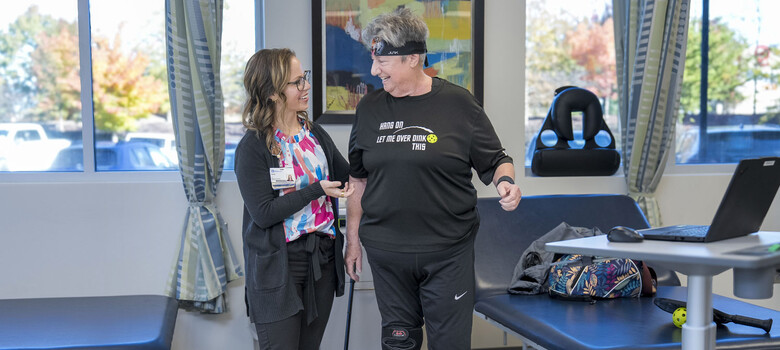 From the DukeHealth.org archives. Content may be out of date.
From the DukeHealth.org archives. Content may be out of date.
Less is More Approach for Prostate Cancer

The traditional treatments for prostate cancer—including radiation and removing the prostate gland—can be frightening. So much so that some men are reluctant to be screened for the disease. Sometimes less is more when it comes to prostate cancer treatment.
But these days, if a man hears he’s been diagnosed with prostate cancer, he may not have to prepare himself for any of these treatments anytime soon. Instead, his doctor may recommend something called “active surveillance.”
This conservative option, which involves close monitoring, is often a relief to patients, says Daniel George, MD, director of genitourinary oncology for the Duke Cancer Institute. “With prostate cancer, the real issue is not the diagnosis,” he says. “It’s what you do about it when you find it.”
More and more, patients with low-volume and low grade prostate tumors are opting for a less-is-more approach. But active surveillance, as the name suggests, is not a laissez-faire strategy. The doctor checks for PSA (prostate-specific antigen) levels in the blood every three to six months. Other tests, including ultrasound, may be performed to see if any cancer is growing.
Active surveillance isn’t just up to the physician; patients have a responsibility, too. They may need to change their diet, ramp up their activity, control their weight, and take vitamin supplements. “A tremendous amount of empowerment goes along with active surveillance,” Dr. George says.
Dr. George says studies show that 60% to 70% of men undergoing active surveillance do not have a spread of cancer within five to 10 years. He’s eager to see longer-term studies but is optimistic so far. “The vast majority of men with prostate cancer can avoid surgery and all the possible consequences that go with it,” he says.
What Is PSA?
PSA (prostate-specific antigen) is an enzyme made by the prostate. The level of PSA in the blood is often elevated when prostate cancer is present. A blood test measuring PSA levels is often part of a man’s yearly physical to screen for prostate cancer. Discovering the link between PSA and cancer led to prostate cancer now being detected, on average, a full six years earlier than it was in the 1980s.
Opting for Active Surveillance
Dennis Humphries, 58, was happy to forego traditional prostate cancer treatments when he was diagnosed in 2009. He says his cancer was so small and so slow-growing that treating it with surgery or radiation felt like “swatting a fly with a cannonball.”
“The option of not doing anything was best for me,” says the Chapel Hill resident. He says his wife, Emily Greene, has been very supportive of his decision and of the wait-and-see approach. Cancer has had little impact on their lives. During the four-and-a-half years he’s been on active surveillance, Humphries says cancer hasn’t kept him up at night.
He also began a daily regimen of finasteride, medication used to treat benign prostate enlargement, which may have played a part in shrinking the tumor. Dr. George recently gave Humphries more good news: he can drop back his PSA tests to once every six months. “My active surveillance continues indefinitely,” Humphries says. “My prognosis is excellent at this point, and Dr. George feels that it is unlikely I will ever need treatment.”
A Personal Decision
Active surveillance is not right for every man and every type of cancer. For larger or fast-growing cancers, surgery and other therapies are likely the right course.
It’s important, too, to look at each case individually. “The strategy may even be right for men with a family history of prostate cancer,” Dr. George says. “If your uncle had prostate cancer at age 80, that’s different from your father and maybe a brother dying from it at a young age. We want to educate and to empower men—and couples—to make the decision that’s best for them.”
Active Surveillance vs. Watchful Waiting
Dr. George explains that there’s another wait-and-see approach for prostate cancer, and it’s different from active surveillance. “Watchful waiting” may be used in elderly men who have prostate cancer but may die of another cause—heart disease, for instance—sooner than the prostate cancer would prove fatal.
Both approaches are useful, but they are for different demographic groups. “Active surveillance is much more proactive than watchful waiting in that we monitor for signs of disease progression that appear before symptoms develop,” Dr. George explains.



